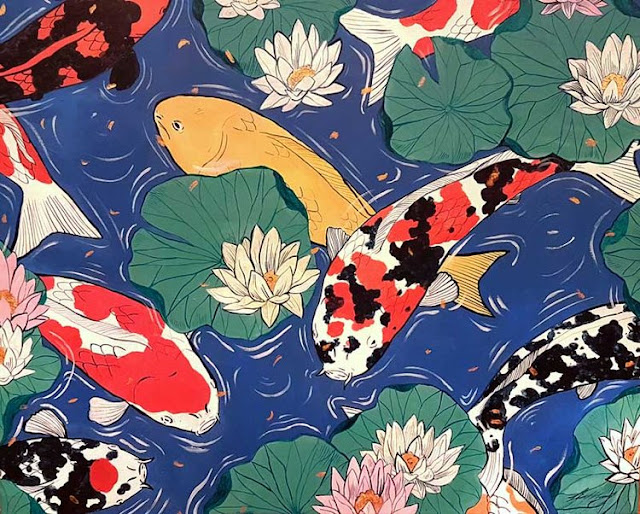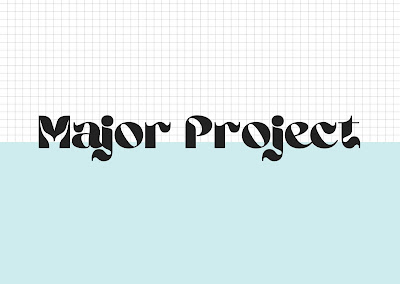Design Principles: Project #3
05.11.2020 - 29.11.2020
Seerat Tayyab Mukhtar Qureshi - 0345576 (BDCM)
Project #3 Observation
1. Lectures
Visual analysis:
A method of understanding design that focuses on the visual elements and principles. It is a description and explanation of visual structure. The purpose of visual analysis is to identify the choices the designer made when creating the design and how the formal properties communicate ideas, content or meaning. Visual analysis is used to critically interpret and read images. This form of analysis sharpens our critical judgement skills and helps us seek out answers instead of passively receiving information.
Phases of visual analysis:
1. Observation
2. Analysis
3. Interpretation
1. Observation: closely looking at the design and identifying the visual elements. Then trying to describe them carefully and accurately in your own words. Do not read about the design beforehand.
2. Analysis: Think about your observations and make statements about the work. How do the specific visual elements combine together as a whole and what effect does it have on the viewer?
3. Interpretation: Observations, description, and analysis of the work are fused with facts about the design work.
Instructions:
Module Information Booklet:
Final project:
For this project I chose a design work by Lisa Wong Sook Kuan. I saw some of her works at the KL Art Expo and was really inspired by her style.
Fig 1.0: Her display at the Expo
Fig 1.1: My chosen work
Gift of the Flow (2018) by Lisa Wong Sook Kuan
Acrylic and gold leaf on canvas,
24x30cm
Observation:
This design work is in landscape format and is composed mostly of the primary colours red, yellow and blue. There is a small use of black and pink as well. There is a use of a thin black lines to outline the objects. Line work is used to add details to the individual elements as well. The water is a solid navy blue with curved white lines to add highlights.
Analysis:
This work is very harmonious and all the elements all work in unity. There is a variety of koi fish and they all have different patterns. There is contrast between the yellow fish and the blue water which brings the attention of the viewer to that particular fish. This fish is also centred in the composition further emphasising it. The fish are framed by the lily pads and the flowers which line the edges of the work. There is quite a lot of repetition in terms the lily pads and the fish. However, they seem to be in equal numbers making the work quite balanced. Movement is created through the turning bodies of the fish and naturally the eye follows the shape. The white lines also emphasise movement and create a visual flow in the artwork.
Interpretation:
This work is by Lisa Wong Sook Kuan who was born in Malaysia to Chinese parents, which is perhaps why she used koi fish and lily pads which are often associated with South East Asian cultures. She also has a love for the natural environment which would explain her simplistic depictions of nature in her work. She has often used koi fish and other animals such as cranes in her work.
Composition ideas:
Fig 1.2: Composition sketches
Fig 1.3: Idea development
I decided to include some colours and patterns from a famous form of Pakistani art known as "Truck Art." The name originates from colourful paintings done on huge trucks that transport various materials. After showing Miss. Jinchi this idea development she said that it was a good idea and next week I should experiment more with colours.
Fig 1.4: Idea development
After showing Miss Jinchi this idea, she said it was good however, I should be careful in the future as my sketches can get a bit confusing. She also suggested I rearrange my composition a bit as the bright flowers and leaves might overpower or clash with the colourful patterns on the fish.
I decided to do this work on an A4 canvas and acrylic paint like the original painting. I started by sketching out my design on the canvas.
Fig 1.5: Sketching
I used two coats of blue paint for the background to get the same even finish as Lisa Wong's work. Then I added the details.
Fig 1.6: Final work
Rationale:
In this work I used inspiration from Lisa Wong Sook Kuan's work, Gift Of The Flow. I used elements of Truck Art which represent my Pakistani culture and combined them Wong's art style. The leaves and the colours on the koi fish are inspired by the truck art. In this work I wanted to show that my art style is quite influenced by South East Asian culture even though I myself am not from that area of Asia. Yet, I can still be influenced and appreciate my own native culture and combine them both in a sort of hybrid culture. I also drew influence from the design principles Wong uses in her work, harmony, balance, unity and contrast.
Feedback:
Miss Jinchi suggested that I include patterns from my culture rather than simply just recreating her work in a different composition and art style. That would make the work more meaningful and strengthen the idea behind it. In the future I should also be careful when sketching so that my ideas don't get mixed up and are clear to understand.
Weekly reflection:
I really enjoyed this work because Lisa Wong is one of my favourite artists. I also really enjoyed drawing and painting on a canvas since my previous two projects were done digitally so this was a nice break. Exploring my culture and the art forms originating from it was an interesting part of this project as it is something I guess I have taken for granted and not really appreciated my culture fully.
Final reflection:
This module has been a great one and probably one I enjoyed the most. I enjoyed learning about the subtle design traits that go into a work that we don't always see at once but they really affect our perception of the work. I realised that I started paying more attention to these principles when I make compositions for stuff outside of university and how they make my work better. I have also been encouraged to explore myself in this module which although is tough for me but it has provided me with a lot of insight on how meaningful and vulnerable a piece of design can be and how you can make the audience feel the same emotions through careful use of the principles.
I think I have become more open minded as the module went on and more open to trying new ideas and looking at things from different perspectives. I have also learnt not to just fixate and settle on one idea but rather explore my abilities to the maximum. I have produced works that I love and some that I wasn't too happy with but with every work I learnt so much and I think I have gotten better at expressing my emotions and thoughts through design. I look forward to applying my knowledge from this module in the future.
Thank you Ms. Jinchi,









Comments
Post a Comment